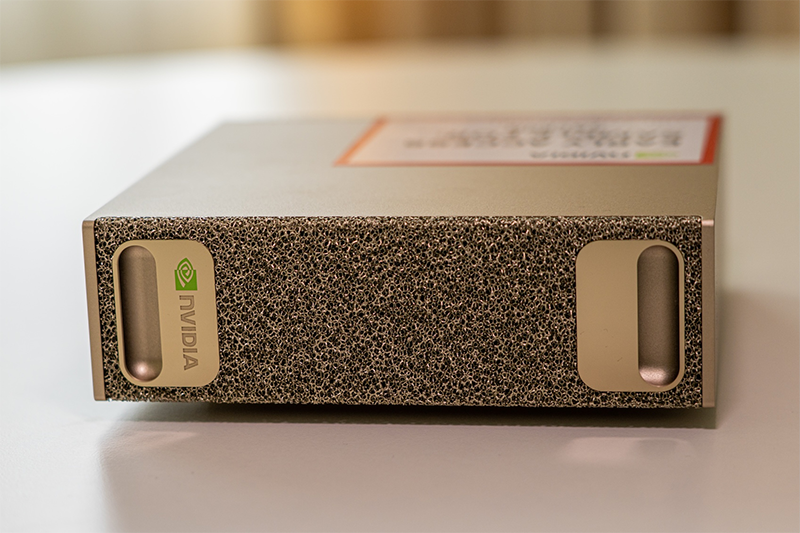October 13, 2025 – The world of artificial intelligence just got a lot more personal. After months of anticipation, NVIDIA’s DGX Spark, a machine hyped as a “personal AI supercomputer,” has finally started landing on the desks of developers and researchers. And the first performance reports are in, painting a picture of a device that could fundamentally change how cutting-edge AI is developed.
For years, tinkering with massive AI models—the brains behind everything from ChatGPT to advanced scientific research—has been the exclusive domain of those with access to giant, power-hungry data centers. With the DGX Spark, NVIDIA is shrinking that power and putting it into a sleek, quiet box not much bigger than a Mac Mini.
So, What’s the Big Deal?
Imagine trying to build a skyscraper using only hand tools. That’s what developing complex AI has been like for many without access to industrial-scale computing. The DGX Spark is like handing that builder a state-of-the-art power toolkit. At its heart is NVIDIA’s new Grace Blackwell GB10 Superchip, which uniquely combines the processor (CPU) and the AI powerhouse (GPU) into one unit. This is coupled with a massive 128 GB of unified memory. Think of this memory as a giant workbench. On traditional computers, the CPU and GPU have separate, smaller benches and have to constantly pass materials back and forth. The DGX Spark’s unified design lets them both work on the same huge project simultaneously without any delay, which is crucial for handling the enormous AI models of today.
This allows the DGX Spark to run and fine-tune AI models that would bring most high-end consumer PCs to their knees.
Let’s Talk Speed: What Do the Numbers Mean?
Early benchmarks are giving us a fascinating glimpse under the hood. When it comes to AI, speed is often measured in “tokens per second” (tokens/s). A token is basically a piece of a word, so this metric tells you how fast an AI can “think” or generate text.
- For Complex Models: A test running a massive 120-billion-parameter model (think of parameters as the neurons in an AI’s brain) clocked in at around 11.66 tokens/s. While that might not sound lightning-fast, the ability to even run a model of this scale on a desktop machine is revolutionary in itself.
- For Dense, Heavy-Lifting Models: When tasked with a more traditional 70-billion-parameter model (Llama 3.1), the DGX Spark produced text at 2.66 tokens/s.
Now, you might see that number and compare it to the hundreds of tokens per second you see from cloud services and be underwhelmed. But that’s missing the point. The DGX Spark isn’t about outperforming a data center; it’s about giving developers the power to work locally, securely, and without racking up enormous cloud computing bills.
The real magic is its ability to handle these models at all. The bottleneck, as experts point out, isn’t raw power but memory bandwidth—the speed at which the AI can pull information from its memory. The DGX Spark hits a limit of about 199.5 GB/s. For context, a high-end consumer gaming card like the GeForce 3060 has a bandwidth of 360 GB/s. But that card doesn’t have the sheer memory capacity to even load these giant models in the first place. The Spark sacrifices some top-end speed for the incredible ability to work with an enormous amount of data, a trade-off that developers have been dreaming of.
Who Is This For, and Why Should You Care?
This isn’t a machine you’ll be buying to check your email or play games on. The DGX Spark is a specialized tool for the builders of our AI future:
- AI Researchers and Developers: They can now experiment and iterate on huge models without waiting for access to a shared cloud server. This could dramatically speed up innovation.
- Startups: Small companies can now punch above their weight, developing sophisticated AI products without the massive initial investment in cloud infrastructure.
- Universities and Students: It democratizes access to AI, allowing the next generation of engineers and scientists to get hands-on experience with the kind of technology that has been locked away in corporate labs.
For the rest of us, the impact will be indirect but profound. Faster, more accessible AI development means more innovative apps, more powerful tools, and quicker breakthroughs in fields like medicine and climate science. The AI-powered features that will define the next decade of technology will be built on machines like the DGX Spark. It’s not just a new computer; it’s the start of a new era for artificial intelligence.

